Abstract
As a transcriptional promoter in primary cultures of sensory ganglionic neurons, DNA sequences near the 5' terminus of the latency-related (LR) gene of bovine herpesvirus 1 were at least 10 times more efficient than the simian virus 40 early promoter-enhancer. In contrast, as a promoter in bovine, rodent, or monkey cells, the LR promoter was approximately six times less efficient than the simian virus 40 early promoter-enhancer. The LR promoter had strict orientation preferences in neurons and all other mammalian cell lines tested. Removal of a 146-base-pair XhoI fragment from the LR promoter resulted in stimulation of LR promoter activity in bovine cells but not rabbit neurons, monkey fibroblasts, or rodent cells. LR promoter activity in bovine cells is stimulated by bovine herpesvirus 1 lytic infection, suggesting that viral gene products or virus-induced factors positively regulate the expression of the LR gene. A synthetic glucocorticoid, dexamethasone, repressed LR promoter activity in bovine cells. These results imply that a variety of factors can influence the expression of the LR gene during latent infections of neurons as well as during the lytic infection cycle.
Full text
PDF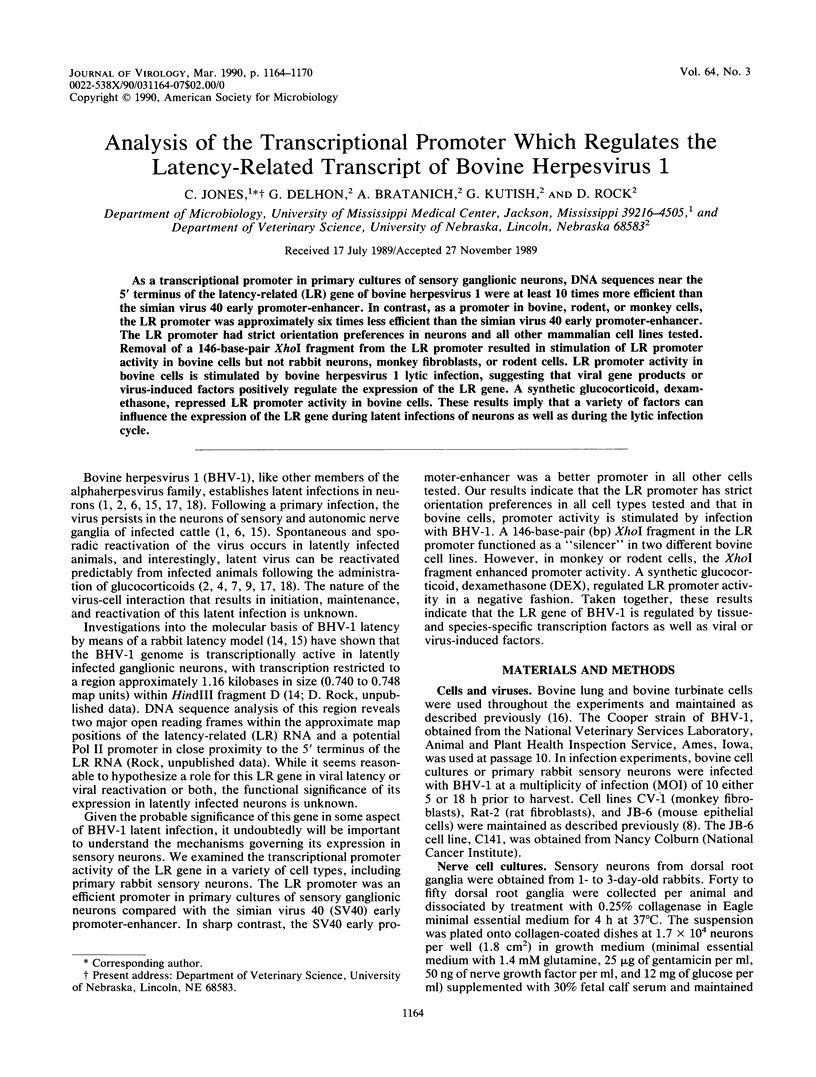
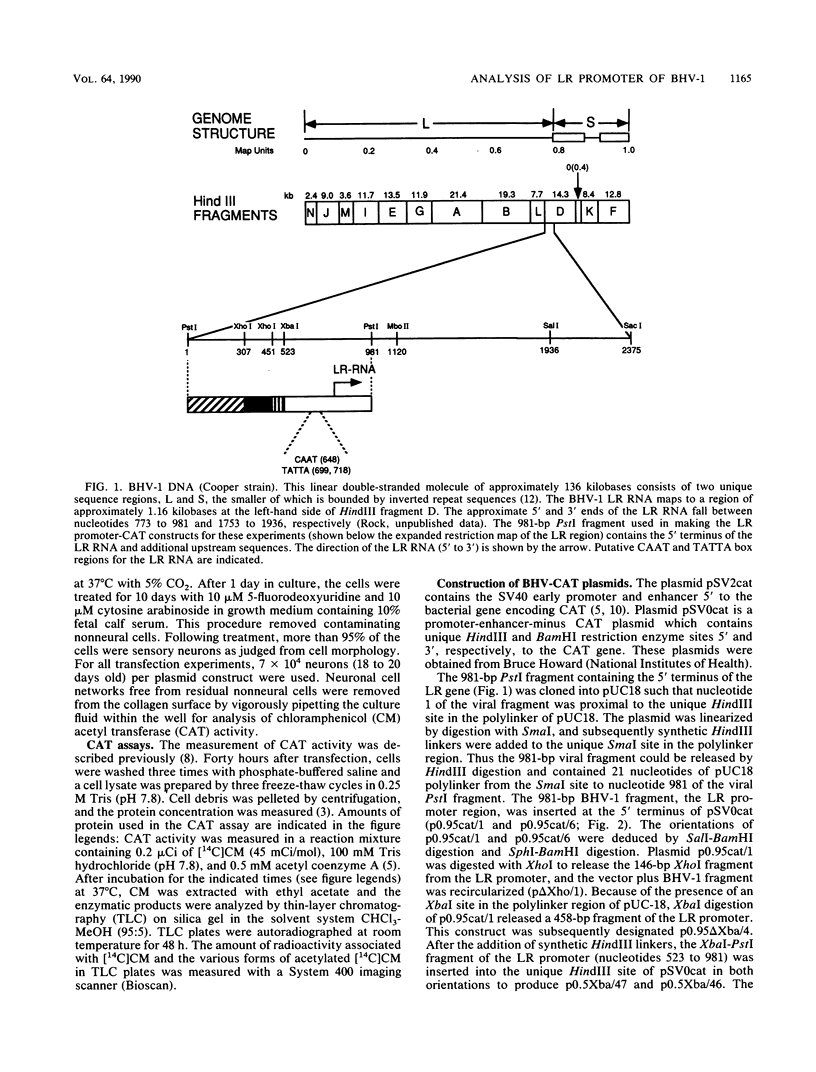
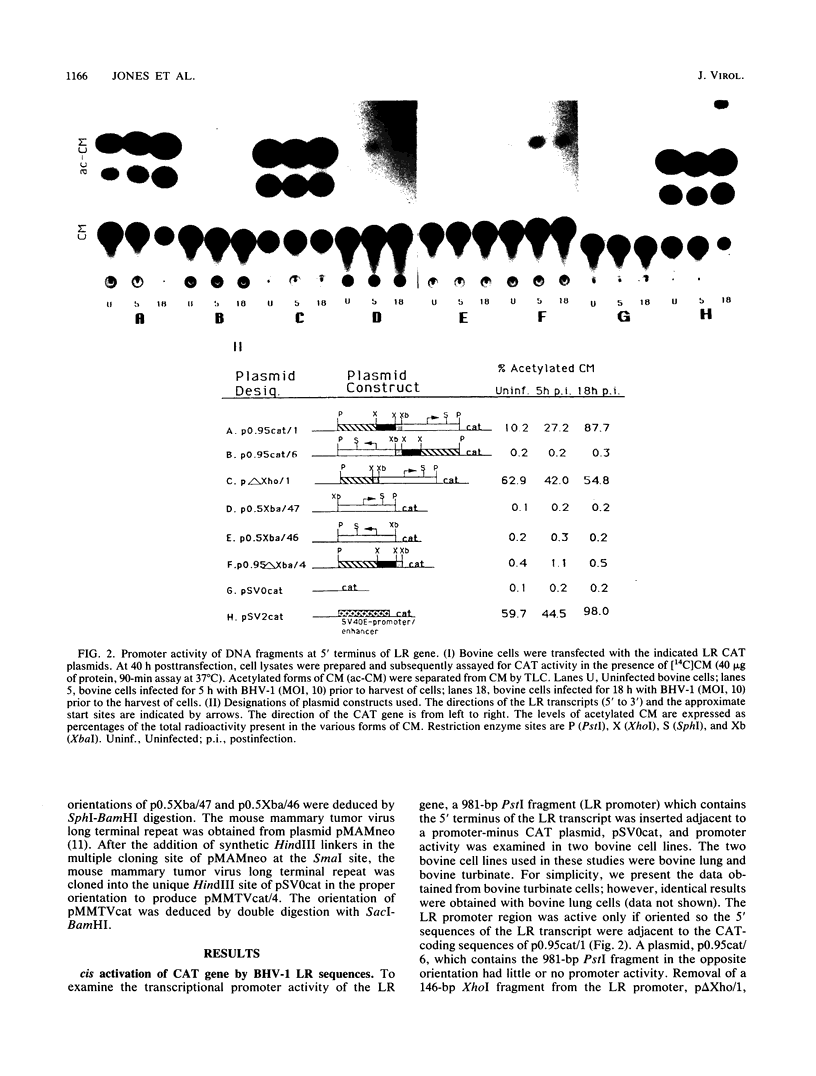
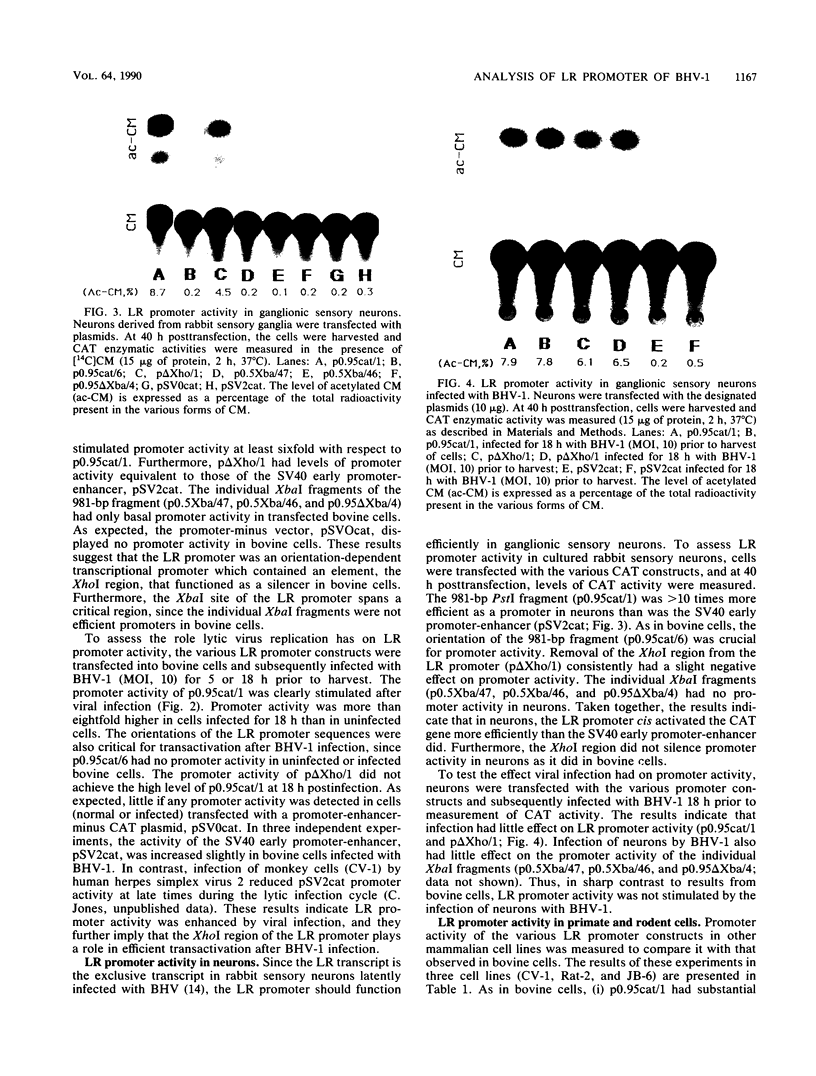
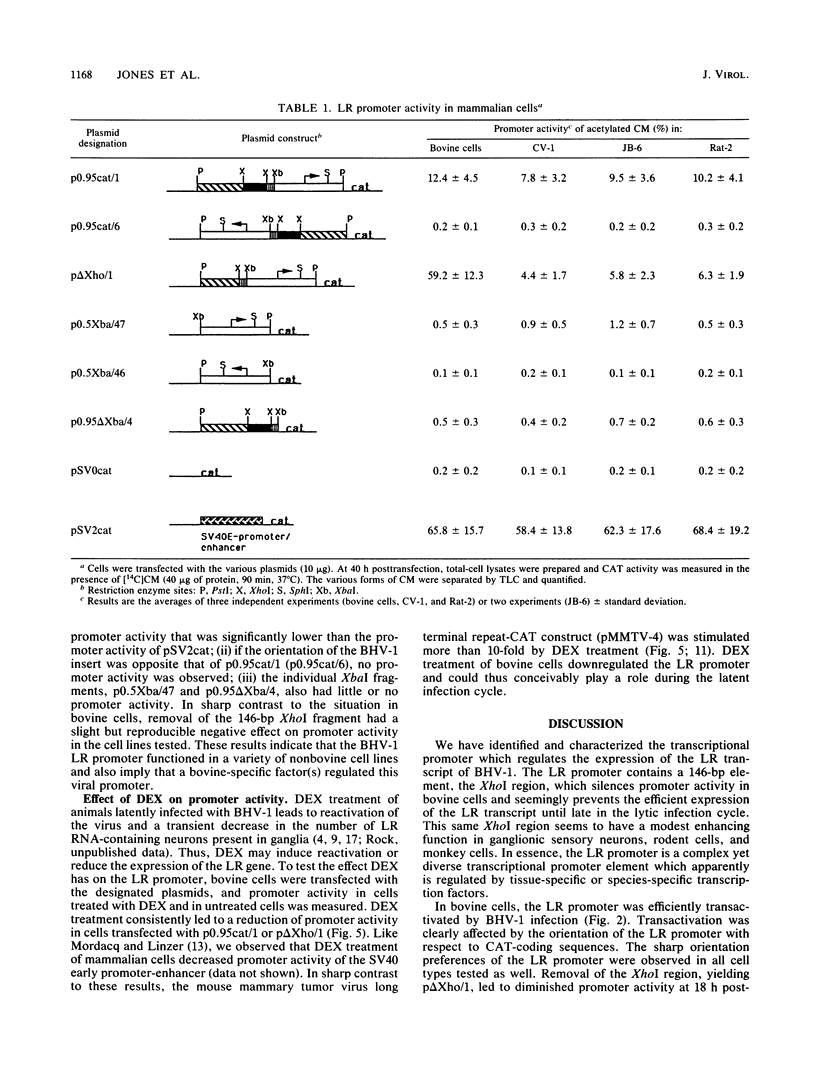
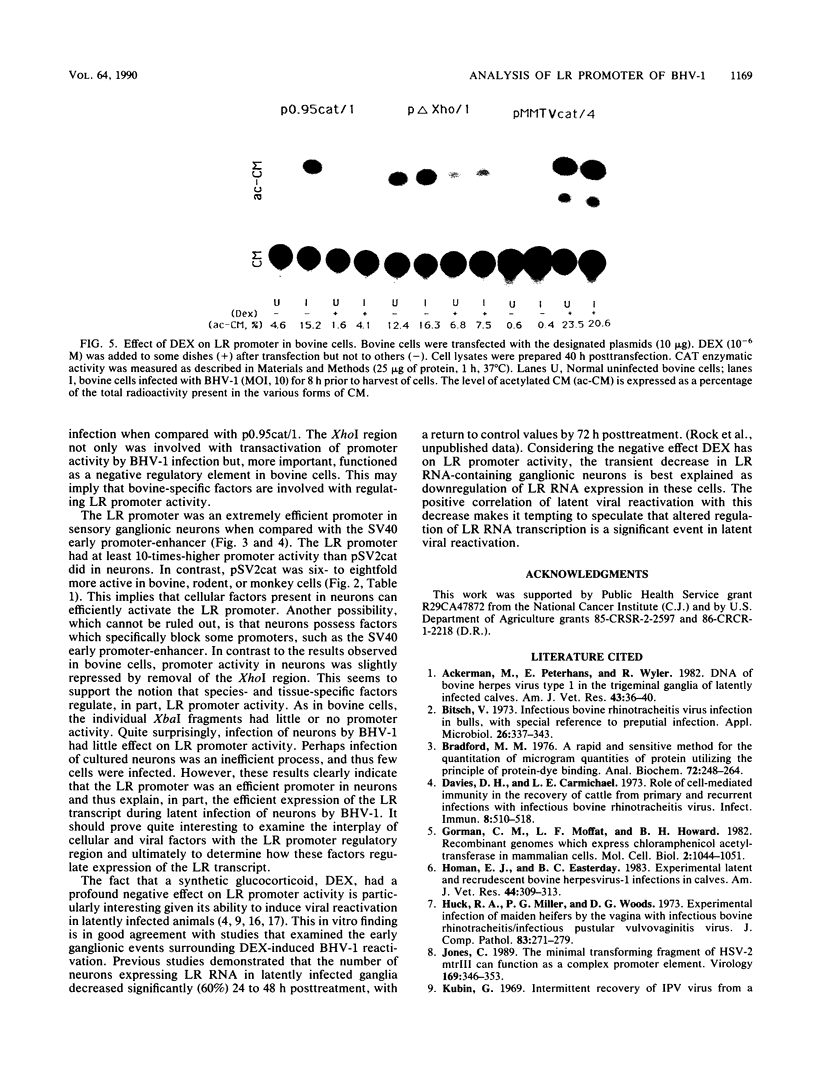
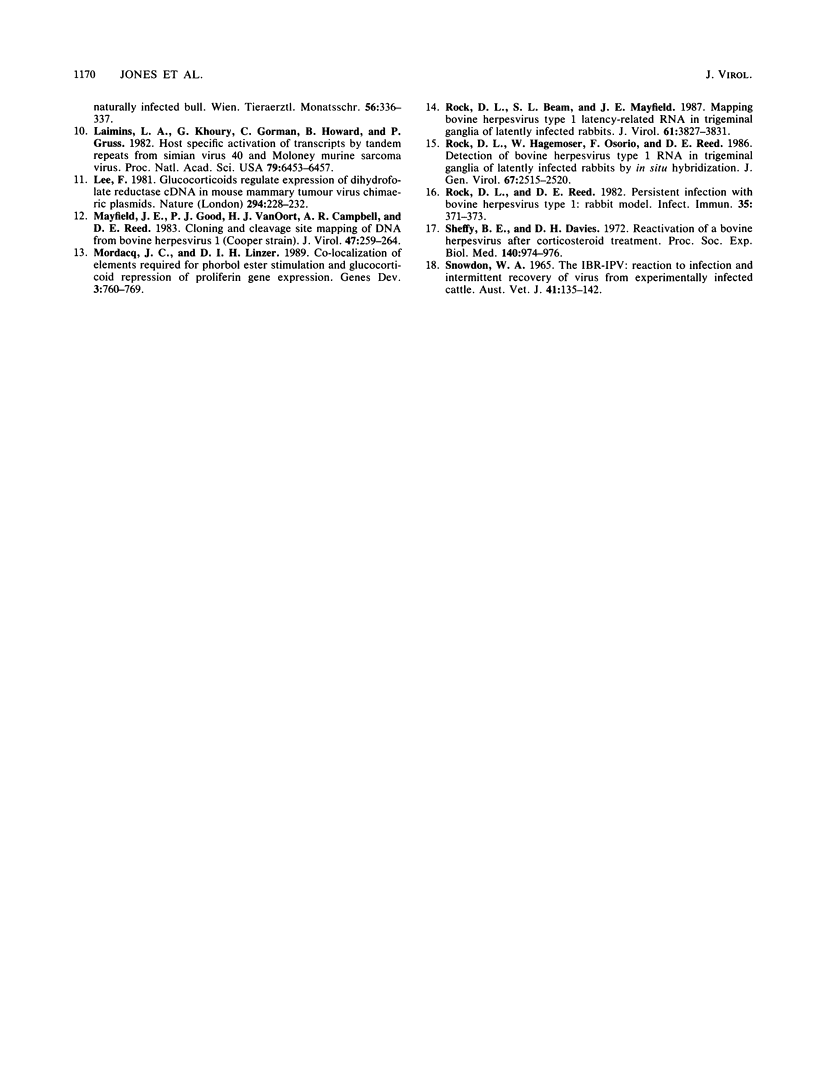
Images in this article
Selected References
These references are in PubMed. This may not be the complete list of references from this article.
- Ackermann M., Peterhans E., Wyler R. DNA of bovine herpesvirus type 1 in the trigeminal ganglia of latently infected calves. Am J Vet Res. 1982 Jan;43(1):36–40. [PubMed] [Google Scholar]
- Bitsch V. Infectious bovine rhinotracheitis virus infection in bulls, with special reference to preputial infection. Appl Microbiol. 1973 Sep;26(3):337–343. doi: 10.1128/am.26.3.337-343.1973. [DOI] [PMC free article] [PubMed] [Google Scholar]
- Bradford M. M. A rapid and sensitive method for the quantitation of microgram quantities of protein utilizing the principle of protein-dye binding. Anal Biochem. 1976 May 7;72:248–254. doi: 10.1016/0003-2697(76)90527-3. [DOI] [PubMed] [Google Scholar]
- Davies D. H., Carmichael L. E. Role of cell-mediated immunity in the recovery of cattle from primary and recurrent infections with infectious bovine rhinotracheitis virus. Infect Immun. 1973 Oct;8(4):510–518. doi: 10.1128/iai.8.4.510-518.1973. [DOI] [PMC free article] [PubMed] [Google Scholar]
- Gorman C. M., Moffat L. F., Howard B. H. Recombinant genomes which express chloramphenicol acetyltransferase in mammalian cells. Mol Cell Biol. 1982 Sep;2(9):1044–1051. doi: 10.1128/mcb.2.9.1044. [DOI] [PMC free article] [PubMed] [Google Scholar]
- Homan E. J., Easterday B. C. Experimental latent and recrudescent bovine herpesvirus-1 infections in calves. Am J Vet Res. 1983 Feb;44(2):309–313. [PubMed] [Google Scholar]
- Huck R. A., Millar P. G., Woods D. G. Experimental infection of maiden heifers by the vagina with infectious bovine rhinotracheitis-infectious pustular vulvo-vaginitis virus. An epidemiological study. J Comp Pathol. 1973 Apr;83(2):271–279. doi: 10.1016/0021-9975(73)90052-2. [DOI] [PubMed] [Google Scholar]
- Jones C. The minimal transforming fragment of HSV-2 mtrIII can function as a complex promoter element. Virology. 1989 Apr;169(2):346–353. doi: 10.1016/0042-6822(89)90160-8. [DOI] [PubMed] [Google Scholar]
- Laimins L. A., Khoury G., Gorman C., Howard B., Gruss P. Host-specific activation of transcription by tandem repeats from simian virus 40 and Moloney murine sarcoma virus. Proc Natl Acad Sci U S A. 1982 Nov;79(21):6453–6457. doi: 10.1073/pnas.79.21.6453. [DOI] [PMC free article] [PubMed] [Google Scholar]
- Lee F., Mulligan R., Berg P., Ringold G. Glucocorticoids regulate expression of dihydrofolate reductase cDNA in mouse mammary tumour virus chimaeric plasmids. Nature. 1981 Nov 19;294(5838):228–232. doi: 10.1038/294228a0. [DOI] [PubMed] [Google Scholar]
- Mayfield J. E., Good P. J., VanOort H. J., Campbell A. R., Reed D. E. Cloning and cleavage site mapping of DNA from bovine herpesvirus 1 (Cooper strain). J Virol. 1983 Jul;47(1):259–264. doi: 10.1128/jvi.47.1.259-264.1983. [DOI] [PMC free article] [PubMed] [Google Scholar]
- Mordacq J. C., Linzer D. I. Co-localization of elements required for phorbol ester stimulation and glucocorticoid repression of proliferin gene expression. Genes Dev. 1989 Jun;3(6):760–769. doi: 10.1101/gad.3.6.760. [DOI] [PubMed] [Google Scholar]
- Rock D. L., Beam S. L., Mayfield J. E. Mapping bovine herpesvirus type 1 latency-related RNA in trigeminal ganglia of latently infected rabbits. J Virol. 1987 Dec;61(12):3827–3831. doi: 10.1128/jvi.61.12.3827-3831.1987. [DOI] [PMC free article] [PubMed] [Google Scholar]
- Rock D. L., Hagemoser W. A., Osorio F. A., Reed D. E. Detection of bovine herpesvirus type 1 RNA in trigeminal ganglia of latently infected rabbits by in situ hybridization. J Gen Virol. 1986 Nov;67(Pt 11):2515–2520. doi: 10.1099/0022-1317-67-11-2515. [DOI] [PubMed] [Google Scholar]
- Rock D. L., Reed D. E. Persistent infection with bovine herpesvirus type 1: rabbit model. Infect Immun. 1982 Jan;35(1):371–373. doi: 10.1128/iai.35.1.371-373.1982. [DOI] [PMC free article] [PubMed] [Google Scholar]
- Sheffy B. E., Davies D. H. Reactivation of a bovine herpesvirus after corticosteroid treatment. Proc Soc Exp Biol Med. 1972 Jul;140(3):974–976. doi: 10.3181/00379727-140-36592. [DOI] [PubMed] [Google Scholar]






